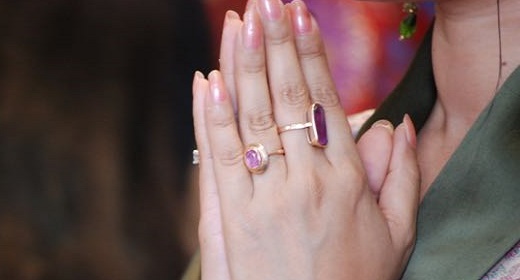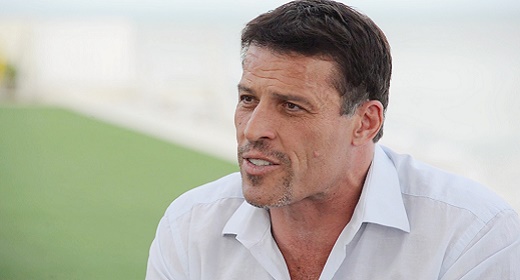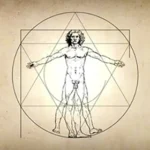by Bill Scheffel: This is the second of five periodic articles reviewing some of the “best books on mediation…”

Here, we take up an examination of “the subtle body” through reviewing the book, Training the Wisdom Body by Rose Taylor Goldfield. Goldfield is a student of the Tibetan teacher Khenpo Tsultrim Gyamtso Rinpoche, who developed lujong—a Tibetan yoga intended to enhance one’s life and meditation, and the subject of this book—and brought it to his students in the West. Long restricted to those who’ve studied with the Khenpo—or those who’ve studied with his close students—Goldfield was encouraged to now make lujong available to anyone.
Training the Wisdom Body is a manual for understanding the practice of lujong that can be practiced on a “conventional” or “esoteric” level – the book prepares us to practice lujong on latter level, which requires understanding some of the fundamentals of Vajrayana Buddhism, which Training the Wisdom Body offers in an extraordinarily concise and clear fashion; those parts alone makes the book worth having, and another reason why this is such a valuable book for meditators.
It wasn’t long ago that the esoteric was truly that, something “intended for or understood by only a small number of people.” Back in the 1960s and early 70s, “esoteric bookshops” were pretty much the only outlet for books on Buddhism, Vedanta, Taoism or the I Ching. Before the arrival of Tibetan rinpoches, Hindu yogis or Christian contemplatives, essentially the only way to learn about the esoteric was to read about it, a limited vehicle indeed (though not necessarily now). The subtle body is spoken of through a host of esoteric names, such as “the most sacred body” or the “true and genuine body” in Sufism; the “diamond” or “rainbow” body in the Vajrayana. Diagrams, such as Hindu yantras or Tibetan tankas illustrate the subtle body through exotic diagrams of the chakra system or deities, sometimes with multiple heads or arms.
Now, through yoga studios, meditation halls, online classes CD sets and of course the hundreds of books that are published every year, the esoteric is far less so and experience of the subtle body is extensive.
What is the subtle body?
The answer turns out to be both simple to understand and possible to be readily experienced. Actually, the subtle body is one of three “bodies” we consist of: the physical body, the “body” of our mind, and the subtle body. Goldfield describes the subtle body as, “our felt experience that lies somewhere between the physical body and the mind. We connect to the subtle body when we open to feelings, sensations and patterns of energy within the physical body.”
Felt experience is the key to glimpsing the subtle body, since as long as we are lost in discursive thought—and especially our story lines—we are absent to felt experience. The feelings of the subtle body are indeed more subtle than how we typically respond when asked: I’m feeling afraid, hurt, angry, jealous or passionate. These emotionally-based feelings are based on storylines and the heightened energy of being triggered, whereas the subtle body communicates itself through bodily feelings. In truth, even if our anger is perpetuated through storyline, below the anger are subtle bodily sensations: restrictions, burning energy, perhaps a quivering in our heart center. Goldfield gives a simple method for encountering these underlying feelings, one that anyone can try:
“Try just feeling into your heart area; simply observe whatever sensation you find there. As you feel into, see if the sensation changes in any ways. Is the sensation heavy or light? Does if move, or does is seem stuck and solid? Is there a color, pattern, or image associate with this sensation… What is your felt internal landscape? If you do not feel anything, feel into that nothingness… that too is a felt experience.”
A significant aspect of the subtle body is that if we feel deeply into it (such as through lying-down meditations for thirty minutes or an hour, using breath to bring us into our body and having the eyes closed to enhance the “inner” exploration) we find that there is seemingly nothing but the subtle body; that our so-called physical body phenomenologically is nothing other than a constellation of ever changing subtle sensation (even pain, in essence, is a subtle sensation, intense but shifting, unable to be located or identified for long, even as “pain.”)
Goldfield summarizes the recommended view of the three bodies for practicing lujong (or any yogic movement or posture):
“As we practice lujong exercises, we always engage all three aspects of our being. Our physical body is engaged in the movement, but the mind is not thinking of this body as a mass of material matter. Rather the mind keeps flashing on there essence of the body: appearance emptiness, like a dream body, a body of light, a rainbow in the sky, or a magical emanation. At times we use specific aspects of subtle body visualization, but in general, we connect with the subtle body by meditating on the felt experience of the physical body…”
So what is lujong and why practice it?
Lujong is a series of well over a dozen postures-with-movement that can be done in any order and combination. All are done standing, are not difficult and in essence wake up the body, synchronize body and mind and help tune us in to the subtle body, to awaken our capacity to recognize it, to enter into the felt sense of it. Many of the exercises can be gradually accelerated, increasing aerobics and the opening up of the body. Goldfield describes the ground of practicing lujong this way (also advice for any type of movement):
“When you move, whether slowly of quickly, generate internal vigor and strength. Move in a relaxed and natural way, but let your movement have inner strength that comes from the central core of your body. This will bring clarity to your mind and help protect you from physical injury.”
I’ve been practicing lujong for over twenty years (and received authorization from the Khenpo to teach it to others) and continue to this day. Each morning I incorporate lujong into an hour-long session of hatha yoga, qigong and breathing exercises, all of which help my day begin in the best possible way, and help my meditation sitting which follows. I used to think of meditation as my “real” practice and would not “count” the time I spent in physical yogas as part of the time I meditated. This I no longer do, as I’ve strived to see them as one… and frankly often feel much more mindful moving than I do on the cushion.
It is for all these reasons that I recommend Training the Wisdom Body to all meditators (and to anyone)! Goldfield’s book contains photographs and very clear text that easily convey how to do the lujong exercises, and why. It is an essential book for understanding what meditation can be.
Bill Scheffel is a writer, creative writing teaching and videographer who has directed Shambhala Training since 1980. Bill was a student of Chögyam Trungpa Rinpoche and taught classes in meditation, creative writing and poetry at Naropa University for thirteen years. Currently, Bill teaches online classes in creative writing and the I Ching. For more on Bill see Vertical Time Yoga.








































